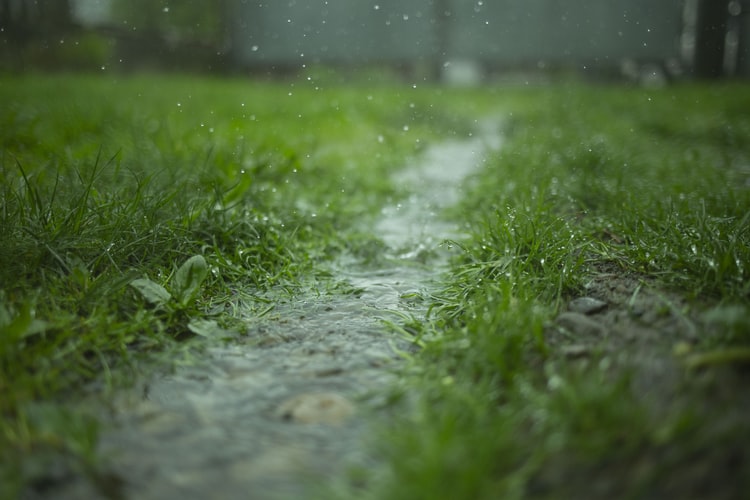What is this French Drain You Speak of?
I wish I’d known what a French drain was 20 years ago. My wife and I bought our current home in 2001. One of the things that attracted us to the house was the backyard. Our backyard sits at the bottom of a wooded hill. It was autumn when we first saw the home; fall foliage covered the woods in red, yellow, and orange. It was beautiful.
A wooden privacy fence encloses the ½ acre yard. We love to flower garden, and it looked perfect for planting … until it rained.
And Then it Rained Some More
After the first heavy rain, water covered the entire backyard. In a panic, I called our real estate agent. How were we supposed to plant a garden? It was best suited for a rice paddy. The agent calmed me down. We explored ways to stop the water.
One of the problems was there are houses on the top of the hill, and the one directly behind us has a sump pump with a drainage pipe. When it rained, water poured down the hill in a small waterfall.
The first thing I did was bring in topsoil. I spread it all around the fence. I created 40 flower beds next to the fence, all eight feet long by four feet wide, with topsoil spread four to six inches deep. It stopped much of the water from getting in, but not all of it. An area of about 20 by 20 feet and another smaller area that was more like a small creek still flooded after a medium to heavy rain. Sometimes the water would get four inches deep or more. We lived with it for almost twenty years until I met Chris Hargis.
One day while having lunch with Chris, I mentioned my soggy backyard. He looked at me and said, “You need a French drain.” A what? Chris explained what it was and that Berger Hargis had been putting in French drains for more than twenty years. We scheduled an installation.
What is a French Drain?
A French drain is a proven method of moving unwanted water. You can use a French drain to divert water from a soggy spot in your yard or even if you have water seeping through your foundation into your basement. The first step is to complete a site inspection. The purpose is to identify the low spots where water gathers, where you want to divert the water too, where the pipe (the French drain) will be laid, and where it will drain. Our French drain flows to the street and then to the sewer a few feet away. The water can also be collected in a catch basin or drainage pit.
Pro Tip: Always check with your local utilities before digging. In Indiana, it’s as simple as calling 811 or visiting Indiana811.org. Utility crews come to your property and mark the locations of underground utility lines at no charge to you.
7 Steps to Installing a French Drain
- After inspecting the site, dig a trench approximately 12 inches wide and 18 to 24 inches deep. If the drain is several feet long, it’s best to use a trench digger.
- Be sure the trench slopes about one inch for every eight feet of pipe.
- Lay crushed stone or gravel in the first few inches at the bottom of the trench.
- Cover the gravel with water-permeable landscape fabric.
- Place PVC pipe with predrilled holes facing the holes down.
- Cover the pipe with landscaping fabric.
- Add gravel
- Top off with soil.
If you follow the seven steps above, you should be able to solve your soggy bottom problems. However, it’s a lot of work, and unforeseen difficulties can come up. So, you can DIY this, or you can do what I did and hire Berger Hargis to install your French Drain. My only regret is that I didn’t do it sooner.
How Can We Help You?
Berger Hargis has a company philosophy of providing personal excellence for all our services. Our growth and success have been due entirely to our commitment to honest, excellent customer service. The company has been built on the referral business we have received due to this philosophy.
If we can answer any questions, please don’t hesitate to Contact Us.
Photo by Roman Synkevych on Unsplash
Go Back







